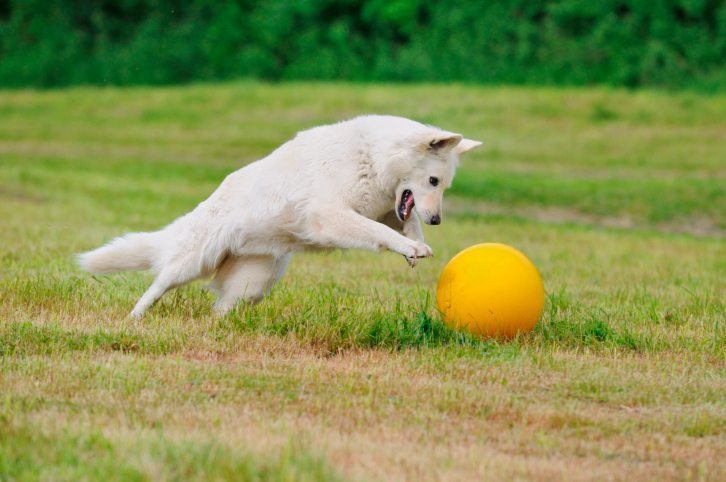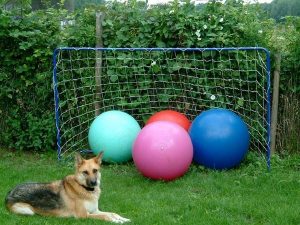The US Defeats Ghana In Opening Round of World Cup
No way! Yes they did. The U.S. beat Ghana in last night’s Group G opening round of the 2014 World Cup. Clint Dempsey of the U.S. kicked in the first goal within the first 30 seconds of play – that is the quickest goal ever scored by an American in a World Cup match (6th fastest overall). With a 1-0 lead over the favored Ghanaians, the U.S. was off to a great start. And they ended it with a great finish – with 4 minutes left in the game the score was tied 1-1. Graham Zusi of the U.S. took a corner kick to John Brooks who headed the ball in for the U.S. lead and ultimate win.
We are passionate about soccer. Sharing a sport passion with your pet is a great way to strengthen your bond. So have you ever thought about how you could share your joy of soccer with your dog?

Soccer – For Your Four Legged Friend
If you like soccer, you and your dog are going to love Treibball! Treibball is a competitive sport where the dog must herd and push large balls into a designated goal. The object of the game is to get eight balls in the goal within a period of time, usually 15 White Swiss Shepherd playing treibballminutes. The eight balls are placed in a billiards like arrangement, four balls, then three, then one, until a triangle is formed. The handler cues the dog to drive the balls into the goal. It is herding, only using balls, not livestock. The handler is allowed to use a whistle or verbal and hand signals to the dog. No shouting or intimidation is allowed from the handler. The dog and handler work in cooperation with each other and are scored on that cooperation. Originating in Germany, the sport was first sanctioned for competition in 2008.
How To Train Your Dog For Treibball
Training your dog to play Treibball should be done is several steps. The first is to teach your dog to “outrun.” Outrunning is a term meaning to run to a designated target, lie down and wait for the command to proceed. Training for this can be as easy as using a mat to teach your dog to run to and lie down next to. Increase the distance between you and the mat little by little until you have a distance of about 15 feet. Once your dog has that behavior down, it’s time to move one to the next commands, “go by” and “away”. “Go by” is a clockwise turn and “away” is a counter clockwise turn. For the “go by” command, work with your dog on your left side. The “away” command requires you to work with your dog on your right side. You can either use a verbal command or a hand signal to cue your dog to the activity. When performed correctly, the dog should run from the appropriate side, reach the target and lie down, awaiting your next command.

Now it’s time to add the balls. You should place the ball before the mat so the dog gets used to running past the ball to the mat. For dogs that love balls, teaching this behavior might be a bit challenging. Start with small balls and as the dog becomes comfortable move to larger ones. Keep the dog’s focus on you not the ball. When your dog has mastered moving past the ball it’s time for the fun to start, pushing the ball to the goal area. Some handlers like to paint a dot on the ball and train the dog to push that dot with its nose. Stay between the ball and the goal and encourage your dog to push the ball towards you. This takes time and repetition. Be encouraging to your dog and recognize if your dog is tiring. Remember this if fun!
Treibball is a sport that doesn’t have to be performed in a competition setting. It is just as rewarding to play one on one with your dog. There are several organizations to research if you are interested in the competition side of the sport. The website for the American Treibball Association is a good place to start.
Image 1: ThinkStock









